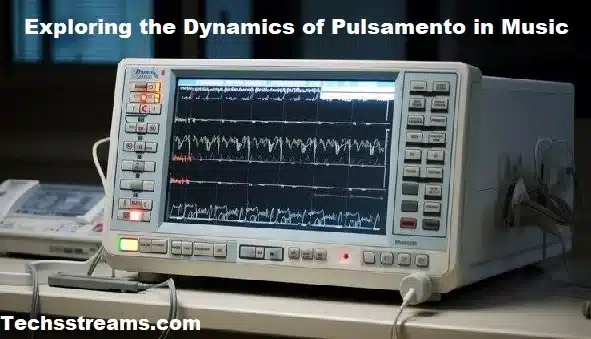
pulsamento, an essential element in various music genres, adds depth and richness to musical performances. From classical compositions to fiery flamenco pieces, understanding and mastering pulsamento can significantly enhance a musician’s expression and proficiency.
Introduction to Pulsamento
pulsamento, originating from the Italian word “pulsare” meaning “to pulse,” refers to the rhythmic pulsation or heartbeat present in music. It forms the foundation of rhythm and provides a sense of continuity and flow within a musical piece.
pulsamento encompasses the rhythmic patterns created by consistent and deliberate movements in music, particularly in stringed instrument playing, such as guitar and violin.
Historical Context
pulsamento has deep roots in various cultures and musical traditions, with early documentation found in Renaissance and Baroque music. It evolved over centuries, becoming a fundamental aspect of many contemporary musical styles.
The Importance in Music Performance
pulsamento serves as a fundamental element in music performance, contributing to the overall rhythm, dynamics, and expression of a piece. It provides musicians with a framework to synchronize their movements and create cohesive musical arrangements.
Techniques for Achieving Pulsamento
Proper hand positioning is crucial for executing pulsamento effectively. Musicians often maintain a relaxed yet firm grip on their instrument, allowing for fluid movement and control over the strings.
Precise finger movement is essential for producing clear and resonant tones during pulsamento. Musicians utilize a combination of plucking, strumming, or tapping techniques to achieve desired rhythmic patterns.
Wrist Action
The wrist plays a significant role in generating the pulsating rhythm characteristic of pulsamento. Musicians employ controlled wrist movements to maintain consistent tempo and dynamic variation throughout their performance.
Applications of Pulsamento in Different Music Genres
pulsamento finds its place in a diverse range of music genres, each incorporating unique stylistic elements and techniques.
In classical guitar repertoire, pulsamento is often used to highlight melodic lines and arpeggios, adding depth and complexity to solo and ensemble compositions.
Flamenco
Flamenco music relies heavily on pulsamento, with performers using intricate fingerpicking techniques to create rhythmic patterns known as “compás.” Pulsamento in flamenco is characterized by its intensity and expressive qualities, enhancing the emotional impact of the music.
Latin Music
In Latin American music, pulsamento contributes to the infectious rhythms and vibrant energy present in salsa, samba, and other traditional styles. Percussive techniques such as “tumbao” in bass playing exemplify the rhythmic prowess achieved through pulsamento.
Pulsamento and Rhythm: Relationship Explained
pulsamento is closely intertwined with rhythm, acting as a rhythmic anchor that guides musicians through complex musical passages. It establishes a steady beat that unifies performers and listeners alike, creating cohesion and structure within a musical composition.
How Pulsamento Enhances Musical Expression
Beyond its role in rhythm and tempo, pulsamento allows musicians to infuse their performances with emotion and nuance. Through subtle variations in dynamics and articulation, musicians can convey a wide range of moods and sentiments, elevating the overall expressiveness of their music.
Challenges in Mastering Pulsamento
Mastering pulsamento requires dedication, practice, and attention to detail. Challenges such as maintaining consistent tempo, coordinating finger movements, and achieving clarity in tone can pose obstacles for aspiring musicians.
Tips for Practicing Pulsamento
- Start slow and gradually increase tempo to build accuracy and control.
- Focus on relaxation and fluidity in hand and wrist movements.
- Practice with a metronome to develop a strong sense of timing and rhythm.
Common Mistakes to Avoid
- Tensing up fingers and wrists, leading to stiffness and discomfort.
- Neglecting proper hand positioning and technique, resulting in poor tone quality.
- Overlooking the importance of dynamics and expression in musical interpretation.
A Key Element in Guitar Playing
For guitarists, pulsamento is an indispensable skill that forms the foundation of various playing styles, including fingerstyle, classical, and flamenco. Mastery of pulsamento allows guitarists to explore the instrument’s sonic possibilities and express their musical creativity with confidence.
Pulsamento in Other Instruments
While commonly associated with stringed instruments, pulsamento can also be applied to percussion, wind, and keyboard instruments. Drummers, pianists, and other instrumentalists incorporate pulsating rhythms into their performances to add depth and intensity to their music.
Innovations and Variations
As music continues to evolve, so too does the concept of pulsamento. Modern musicians experiment with innovative techniques and variations, pushing the boundaries of traditional rhythmic patterns and exploring new avenues of musical expression.
Conclusion
pulsamento stands as a testament to the rhythmic richness and complexity of music. Whether in classical compositions, fiery flamenco pieces, or vibrant Latin rhythms, pulsamento serves as a driving force behind captivating musical performances, enriching the listener’s experience and inspiring future generations of musicians.